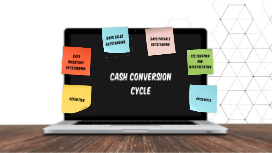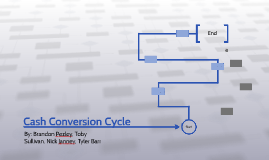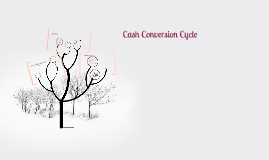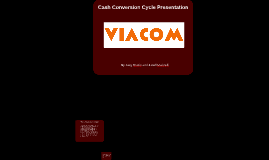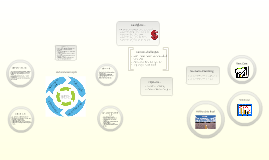Cash Conversion Cycle
Transcript: Bobares, Ma. Theresa G. "In the game of business, the Cash Conversion Cycle is like a relay race – the faster you can pass the baton from inventory to cash, the quicker you can win the race." Cash Conversion Cycle Definition What is Cash Conversion Cycle? Definition is the amount of time in days that a company takes to convert money spent on inventory or production back into cash by selling its goods or services. For example: Example Item Grocery stores or Clothing retailers Short Machinery or automobile manufacturers Long Real estate developers or construction firm Long The Three Components of Cash Conversion Cycle 30% 15% Components 20% 35% DIO Days Inventory Outstanding is the number of days, on average, it takes a company to sell the entire inventory. DSO Days Sales Outstanding is the number of days, on average, it takes a company to collect its receivables. DPO Days Payable Outstanding is the number of days, on average, it takes a company to pay back its payables. Formula Problems: DIO Answer: Sy Co. reported a $1,000 beginning inventory and $3,000 ending inventory for the fiscal year ended 2024 with $40,000 cost of goods sold. The DIO would be: DSO Answer: Sy Co. reported $4,000 in beginning accounts receivable and $6,000 in ending accounts receivable for the fiscal year ended 2024, along with credit sales of $120,000. The DSO would be: DPO Answer: Sy Co. posted $1,000 in beginning accounts payable and $2,000 in ending accounts payable for the fiscal year ended 2024, along with $40,000 in cost of goods sold. The DPO would be: What is the Cash Conversion Cycle? 13.69 15.20 2024 2024 2024 2024 18.25 2024 19.76 = - + Conclusions: Conclusion The CCC indicates how fast a company can convert its initial capital investment into cash. By understanding the components of the CCC and implementing strategies to optimize it, businesses can improve their financial health, enhance liquidity, and drive long-term success.







